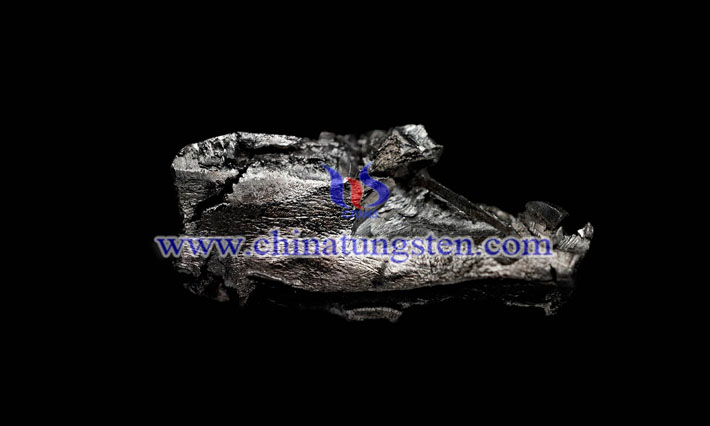Rare Earth is a Strategic Resource, Also a Place for a Strong Country!
- Details
- Category: Tungsten's News
- Published on Wednesday, 27 November 2019 17:24
You know rare earth is a strategic resource, but do you know? It is also a key mineral, which has already become the place for a strong country to contend for! So on September 3, a report from Australia that read like a menu attracted a lot of attention. Why? Because this is a report on 15 rare earth and key mining projects; because the key mineral industry is crucial to a country's national defense; because Australia's rare earth production capacity ranks second in the world, next to China; and because Australia is considered as the ideal "rare earth partner" of the United States. A few days ago, these projects aroused heated discussion again. So, what happened?

According to foreign media reports, on November 14, in order to improve rare earth production and ensure stable supply to the United States, Australia will provide national preferential interest rate loans for the 15 rare earth and key mineral development plans being promoted. Meanwhile, it will invest 4.5 million Australian dollars to fund relevant research and set up an office for full-time responsibility.
It should be noted that these projects involve key minerals such as rare earth, antimony, magnesium and tungsten. What are the key minerals? Key minerals refer to a kind of minerals with important economic value and high supply risk. In recent years, the United States, the European Union, Japan and other countries pay more and more attention to key metals.
You know, these projects are considered to be Australia's plans to win over the United States and challenge China's dominant position in the global rare earth market. Therefore, it is necessary for us to understand how the United States chooses "key minerals"? What are the key metals on the U.S. critical minerals list?

How does the United States choose "key minerals"? There are three bases for the selection of "key minerals" in the United States: first, non fuel minerals or mineral raw materials that are critical to the economy and national security of the United States; second, minerals that are vulnerable to damage or impact in the supply chain; and third, minerals that have important functions when manufacturing some products, and the lack of such products will have a significant impact on the economy or national security.
What are the key metals on the U.S. critical minerals list? On May 18, 2018, the United States released a list of 35 key minerals: rare earth, tungsten, antimony, magnesium, aluminum, arsenic, barite, beryllium, bismuth, cesium, chromium, cobalt, fluorite, gallium, germanium, graphite (NATURAL), hafnium, helium, indium, lithium, manganese, niobium, platinum group metals, potassium salt, rhenium, rubidium, scandium, strontium, tantalum, tellurium, tin, titanium, uranium, vanadium and zirconium. Some of them, such as tungsten and rare earth, are the dominant minerals in China.
Which industries need to use these key metals? For example, smartphones, Tesla, fighter planes and so on all use rare earths. Apple has even produced a disassembly robot, Daisy, to recycle rare earths from iPhones. The permanent magnet motor on Tesla is also rare earth element. The amount of rare earth coating required for an F-22 fighter is in tons.
After all, it has been mentioned in foreign media reports that the total development cost of these projects is 5.7 billion Australian dollars (1 Australian dollar is about 4.8 yuan). This time, the Australian reinvestment fund. It is said that the two countries are expected to sign an action plan in Washington in the near future. Does all of this mean that the cooperation between the United States and Australia will deepen?
In this regard, some analysts believe that there are certain risks and challenges in these projects.
The risk is: how to price mineral output depends on China. The challenge lies in the cost of developing rare earth and important minerals, as well as the construction of processing plants, and many problems that may be faced. Australia's rare earth production is the second in the world, which is true, but only accounts for one sixth of China's. In addition, China's rare earth processing capacity is five times that of the rest of the world. If the United States is to reach the level of China's rare earth processing, it will take several years to build a rare earth processing plant. Moreover, China's rare earth processing technology is high and the cost is low, and other channels are difficult to compete. So, after all, can Australia, an ally of the United States, fully tap its "rare earth potential"? Some analysts believe that it remains to be seen whether the US and Australia can cooperate closely on rare earth issues.
- Rare Earth Manufacturer & Supplier, Chinatungsten Online: www.chinatungsten.com
- Tungsten News & Prices of China Tungsten Industry Association: www.ctia.com.cn
- Molybdenum News & Price: news.molybdenum.com.cn
- Tel.: 86 592 5129696; Fax: 86 592 5129797; Email: sales@chinatungsten.com



 sales@chinatungsten.com
sales@chinatungsten.com